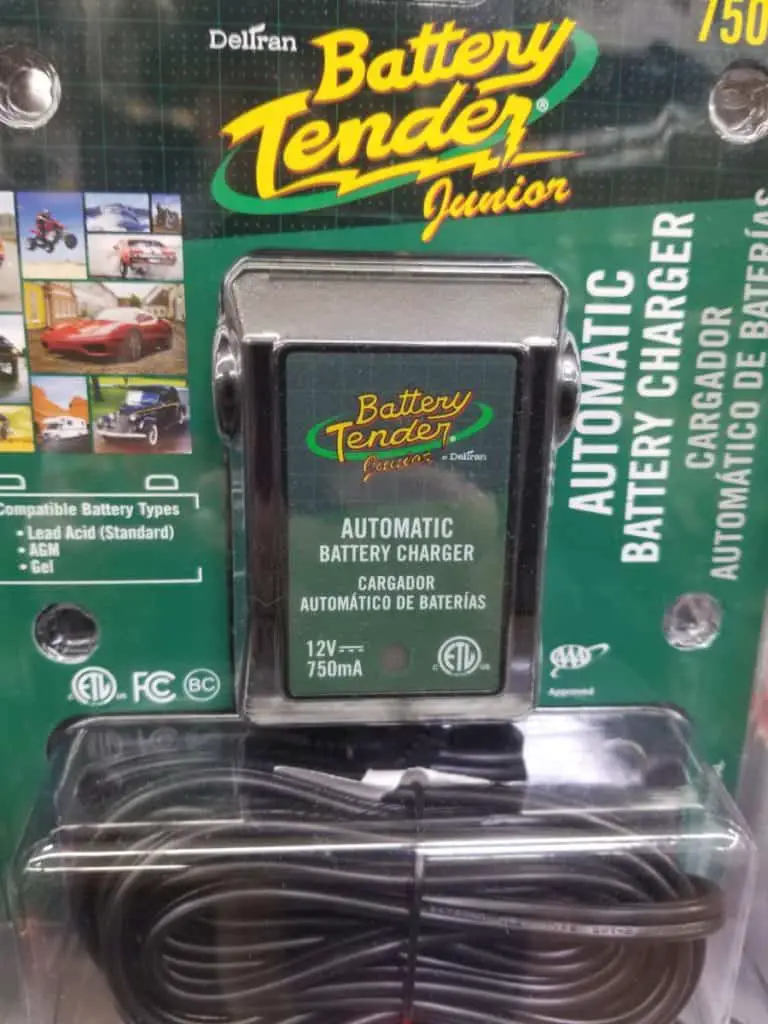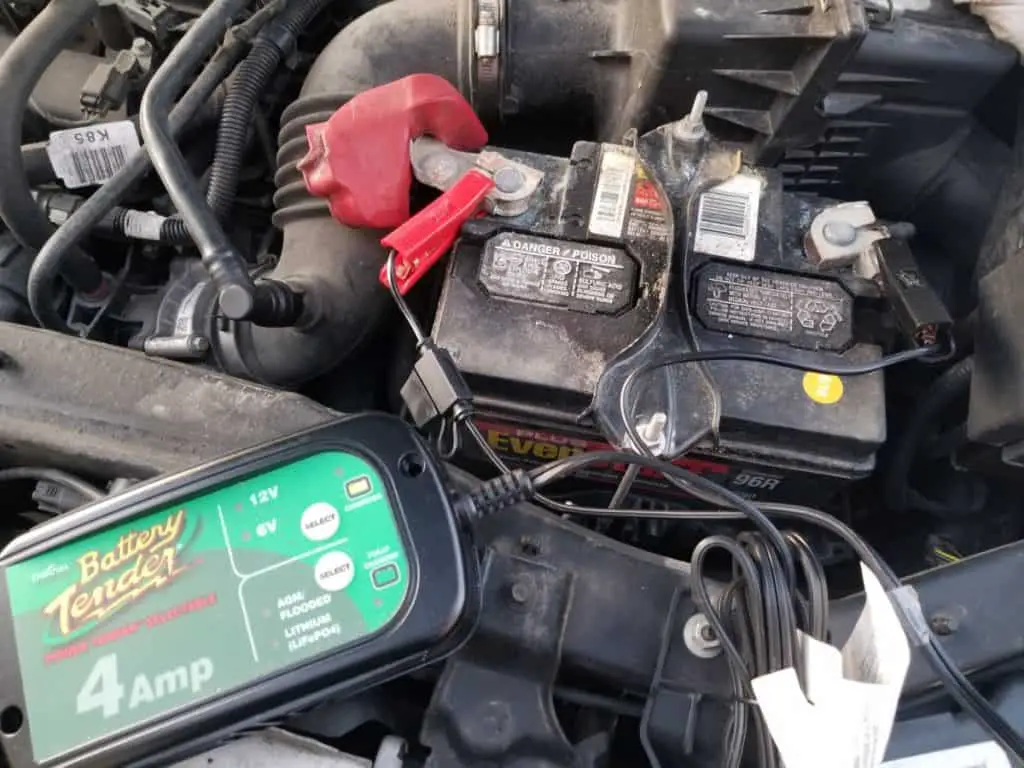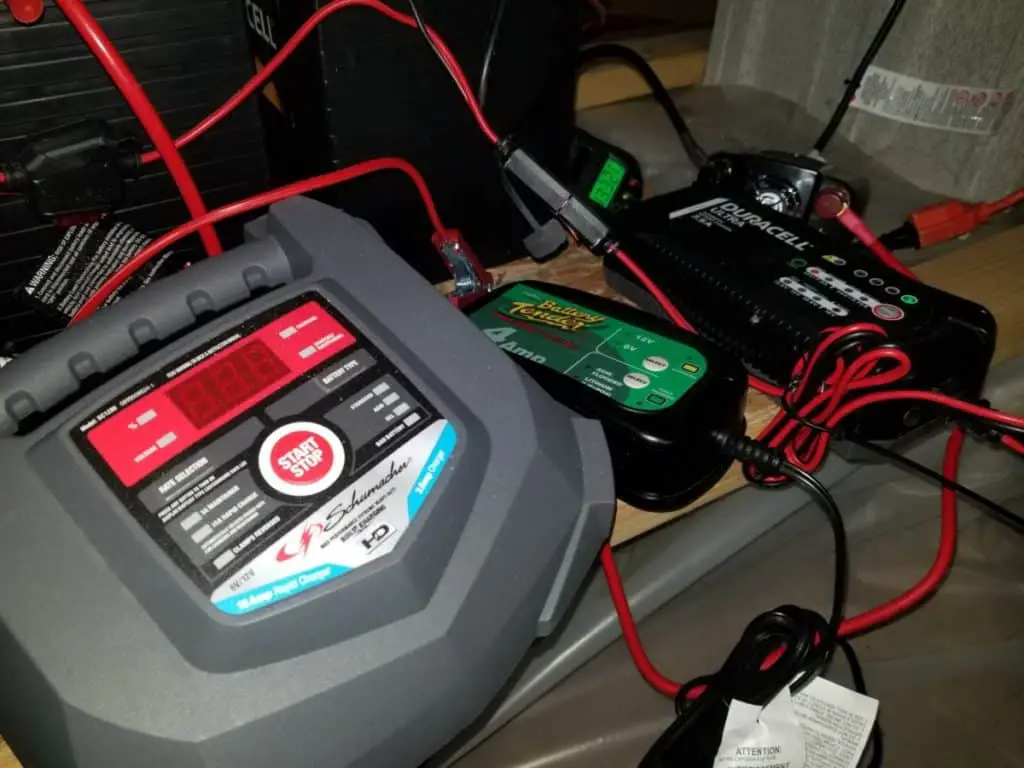If you were to ask anyone to name a type of car battery charger, they would inevitably say “trickle charger”. A trickle charger is typically 1.5 to 2 amps and is intended to bring a moderately discharged battery back to full charge.
They certainly can charge a battery that is in a deeper state of discharge, but it’s not the optimal way to do it if you are pressed for time.
Text trickle chargers are so common, one of the most common questions is how long you should leave it on your battery.
You should leave a trickle charger on a battery for 24-36 hours for a fully discharged battery, or 12-18 hours for one that is half-dead. If the trickle charger is a smart charger, it can remain connected without damaging the battery.
That’s the broad and condensed answer if you’re just looking for a general guess, but if you’re looking to see a really close ballpark estimate how long your trickle charger will take to charge your battery then continue to the next section and I have some easy to use calculators to get you on your way.

How Long does it take to Charge a Car Battery with a Trickle Charger
Since a trickle charger is typically 1.5 or 2 amps, it will theoretically put 1.5 or 2 amps per hour back into a car battery. In actuality, the number is a little bit less and all battery chargers will be about 80% efficient (plus or minus) due to a myriad of factors.
I decided to look at some charging data from the Schumacher battery charger manufacturing company and I extrapolated all of the data and created a series of calculators to estimate the charging time of any battery, at any state of discharge, and with any charger.
To use the calculators you need to know the following:
- Charging Amps of the Trickle Charger
- Open Voltage Reading of your Car Battery (Generally between 10.7 and 12.63)
- Total Amp Hours (AH) of your Car Battery
Knowing how many amps your charger puts out is easy, since it will be labeled right on the charger itself.
Checking the open voltage of your car battery is a simple task with a multimeter. Simply turn the dial to check volts direct current, empress the negative lead to the negative terminal, and the red positive lead to the positive terminal of the battery.

Obtaining your battery’s total amp hours can be a little tricky some car batteries are not generally rated in amp hours and instead are rated in cold cranking amps (CCA) or reserve capacity (RC). If your battery does have a sticker with the amp hour rating then you can skip to the final calculator at the bottom.
If, instead, you have cold-cranking amps go ahead and use the first calculator to obtain your battery’s amp hour equivalency.

If you have reserve capacity minutes listed, use the second calculator to obtain your amp hour equivalency.
EXAMPLE: If I had a 1.5-amp trickle charger, an open voltage of 12.09, my battery had cold-cranking amps of 590, I would use the first calculator and it would give me an approximate amp hour rating of 63.71. I would then plug in all of the values into the third calculator and it would give me a time of 25.37 hours.
Go ahead and give it a try to see how long you’ll be waiting for your battery to top itself off!

How to use a Trickle Charger
If you’re using a modern trickle charger, that is microprocessor-controlled, you should have no problem hooking it up to your battery while your battery is still connected in the car. In fact, you should be able to leave it hooked up indefinitely without fear of ruining your battery do to overcharging.
To hook up a smart trickle charger you must:
- First, hook up the red lead of the charger to the positive terminal of the battery
- Second, hook up the black lead to the negative terminal of the battery (or the designated connection point on the frame of the vehicle as specified by the car’s manufacturer)
- Plug the charger in and wait until it indicates a full charge
- Unplug the charger, wait 10 seconds, and then remove the charging leads from the terminals
If you have an antiquated charger that doesn’t enter into a “float” or “maintenance” mode when the charging is complete, then simply disconnect the cables leading to the negative terminal of your battery and follow the above steps afterward.
Does a Trickle Charger Reduce Battery Life
A trickle charger will not reduce a battery’s life if it is microprocessor-controlled and uses smart technology. Newer chargers are almost exclusively “smart chargers” and can be hooked up indefinitely without overcharging your battery. Antiquated chargers should be removed immediately after charging is completed or you will damage and eventually ruin your battery.
The newer smart trickle chargers conduct real-time diagnostics on your battery and are equipped with a myriad of safety features to keep your battery from damage.
Older trickle chargers simply pump-out the advertised amperage into the battery regardless of the battery state of charge. Even though the amps might not be a lot, say one or two, once the battery is fully charged those one or two amps will be overcharging the battery.
It will be a slow process but those one or two amps will be creating electrolysis in the battery’s electrolyte and your electrolyte will start to evaporate out (sealed batteries might be able to recombine this vapor if the pressure doesn’t build too high).
Once enough electrolyte evaporates out, the plates will be exposed to air and oxidize which will cause irreparable damage to the battery’s ability to charge or give off current when you go to start your car.
If all of the electrolyte evaporates out, then the battery can catch fire or explode if current is still being pumped into it.

Best Trickle Chargers for Car Batteries
I am of the belief that the minimum amps that you should use for charging a car battery is 4 amps and the maximum is 10. I like to stick around four or five myself.
A 4-amp charger is going to get nearly any car battery charged overnight, even if it’s very weak. It’s still low enough in amps to not damage any sized car battery, which is why many people choose a smaller 1.5 or 2-amp trickle charger.
I have used this charger, seen on Amazon, for 6 years without a single issue and it sees daily use in charging my home battery bank for emergency power and also to do a monthly maintenance charge on my vehicle batteries.
It provides a slow and gentle charge, and can be left hooked up indefinitely.
The only drawback is that it does require a minimum voltage of your battery in order to engage the charging process and overcome the safety features. I believe that number is between 9 and 10 volts.
If you have a battery that is less than that, you can always go with this 5-amp charger that also can be left hooked up indefinitely, but only requires 1-volt in order to start the charging process.
You won’t do yourself any disservice by going with either of these chargers and they are a great transitional charger between a trickle charger and an actual battery charger.
Will a Trickle Charger Charge a Dead Battery
A trickle charger has the ability to charge a dead battery so long as the battery has enough voltage to overcome the minimum voltage threshold required by most modern smart chargers. You may need to hook jumper cables up to a really dead battery for 5 or 10 minutes to give it enough of a surface charge and then hook up the charger afterward.
Once it starts though, a trickle charger should have no problems bringing a dead battery back to full charge — it’s just that it can take a very long time.
If you use the calculator above, let’s assume you have a large truck battery with a 110 amp-hour equivalency, and it is completely dead at 10.7 volts. If you use a 1.5-amp trickle charger, you’re going to be waiting for 4 full days for that battery to get up to a full state of charge!
That’s why I recommend a minimum of 4-amps for most car batteries. If you have a larger truck battery or you know you are on the higher side of the amp-hour equivalency range, then by all means get a charger with 5-10 amps.
